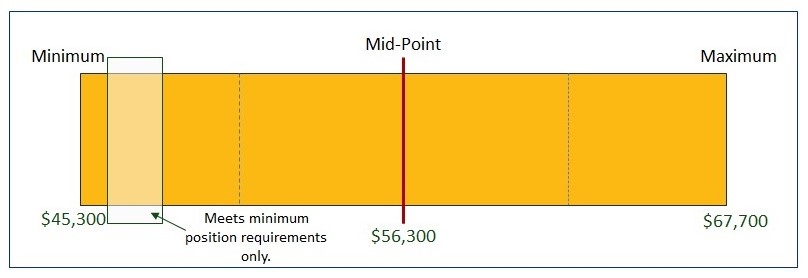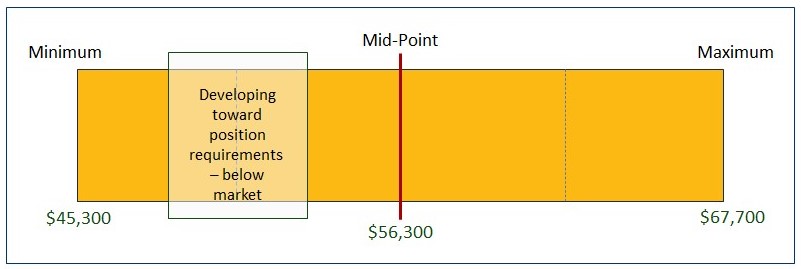1. What is a merit-based pay system and how does it work?
Our pay program provides a financial incentive to meet or exceed the requirements of the job and to focus on activities that best support our mission and align with priorities of the University and the division/department.
- In a merit-based pay system each eligible employee receives an increase in pay based primarily on these factors:
- Your contributions during the fiscal year review period, and
- Your current pay rate compared to the market reference range midpoint for your position.
Division leaders allocate increases among faculty and staff from a pool of dollars made available from the University’s annual budget. HR provides guidelines to help differentiate increases for faculty and staff while also ensuring a level of consistency from group to group.
2. What is the market target? What is the market median?
The University has established an objective (or target) for its faculty and staff pay programs where on average, our pay is at a level that is comparable to the median within the identified market comparator group. The median is the middle number in a range of numbers arranged from ascending or descending order. Most organizations use the median in determining the midpoint for a pay range that represents a specific discipline or a group of similar positions. We use the median rather than the mean, or average, because the median is much more representative of the central tendency of the data. Averages are generally not used due to the influence of extreme highs and lows in the data.
3. Is the uniform base pay adjustment a cost of living (cola) increase? Why doesn’t SU have a cola system?
The uniform base pay adjustment was planned as a one-time event for this year in recognition of the extremely unusual circumstances around the pandemic while a COLA is a pay system that utilizes across the board increases tied to a cost-of-living index. SU adopted a merit-based pay system several years ago in recognition that a system where everyone receives the same percent of pay regardless of contribution does not sufficiently recognize and reward individual achievement.
4. Will everyone get a market equity adjustment this pay cycle?
While the board approved funding to address market equity, it will be prioritized to address those employees who fall farthest below the market median starting with those who may being falling below the current minimum established for their position. This means that not every employee will receive an equity adjustment in this pay cycle.
5. How does Seattle University know what the market is for a position?
Seattle University participates in a number of national and local compensation surveys to establish benchmarks.
/0x35:2400x1566/prod01/channel_34/media/seattle-university/images/offices-and-departments/FallCampusScenes22_pw_047.jpg)



